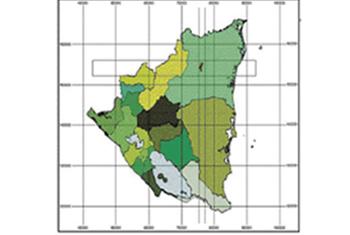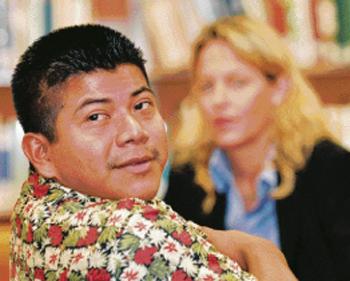LIHU‘E — Noe Coleman of the Mayangna territory of Matungbak in Nicaragua may speak a different language, but to the crowd of about 40 attending his presentation Wednesday, the words he spoke were easily understood and strikingly familiar. The discussion
LIHU‘E — Noe Coleman of the Mayangna territory of Matungbak in Nicaragua may speak a different language, but to the crowd of about 40 attending his presentation Wednesday, the words he spoke were easily understood and strikingly familiar.
The discussion he led, along with Dr. Nan Greer at Kaua‘i Community College Learning Resource Center, detailed the Mayangna human rights struggle and the challenges of maintaining his tribe’s cultural practice of ecological harmony in the midst of an ongoing battle to reclaim ancestral lands from the hands of foreigners or “colonists.”
“There’s a tremendous parallel” between Hawai‘i and Nicaragua, Greer said.
“Nicaragua is experiencing now what Hawai‘i went through 200 years ago having illegal colonists invade their lands and take their lands,” deplete resources and desecrate sacred burial grounds, Greer said
Greer, an environmental anthropologist and instructor at KCC who also translated for Coleman, began working with indigenous land titling in Nicaragua 15 years ago. Greer’s family started nonprofit organization Alistar International and affiliate Alistar Nicaragua to help indigenous communities determine their future for themselves.
The area Coleman and Greer are working to protect and return to the Mayangna tribal group is located in Mayangna Sauni Arungka, also known as Matungbak. The lands cover approximately 100,000 acres yet to be completely demarcated or mapped out. (See map).
Matungbak is located in the bufferzones of the United Nations Educational Scientific and Cultural Organization International Bosawas Biosphere Reserve. The ecology of the area is a tropical broad-leaf rainforest and part of a region that connects the Amazon rainforest with those in Central America, Greer said.
Mayangna cultural practices include supporting themselves through the natural environment without depleting its resources, using boats to communicate with other territories and sustaining health with a 90 percent emphasis on traditional medicine. The natural resources in the Mayangna territory are dwindling as a result of encroachment, logging of wood, development, and other unchecked depletion by colonists.
“Colonists is a concept applied to those groups the Mayangna say are responsible for the destruction of resources and includes private businesses and parts of our government,” said Coleman, who is president, leader and activist of the Mayangna indigenous group.
It creates competition in his territory because the government gives approval to businesses who “come and take our resources” and “because of the competition we’re having to work harder and harder,” Coleman said.
Colonists may actually be removed and resettled in non-indigenous areas by way of Nicaraguan law 445 and 28 according to Greer’s Web site, and groups have received help from the United Nations Human Rights Commission in this process.
“Our identity is strongly connected with the natural environment, Coleman said. “Sometimes people from outside think our practices and knowledge is from old times” but it has been used generation after generation and serves to protect the area’s high level of biodiversity, Coleman said.
“The national government does not understand how to control the land. It leaves people crying for water, for air.”
Coleman said even though there are government programs that talk very strongly of protecting the natural environment, their talk is symbolic and only to obtain money because he does not see any resulting action in his community.
“For those of us living there, it hurts us.”
After the presentation concluded, members of the audience spoke how it echoed Hawaiian culture and land rights issues.
“I was continuously struck by the similarities with Hawaiian history,” said Molly Summers of Kalaheo, and KCC instructor of literature, ethnobotany and French and Hawaiian language.
“I think what he’s saying is happening to a lot of indigenous people,” said audience member John A‘ana of Waimea. “It’s the same with the Hawaiians, the Indians. At least (the Mayangna are) trying to stop it before it gets too bad. The Hawaiians already lost it and now they’re trying to get it back.”
The presentation was sponsored by Alpha Pi Xi, the KCC chapter of the Phi Theta Kappa Honor Society. Linda Kosen, KCC student and president of Phi Theta Kappa will be joining Greer this summer in Matungbak. Greer and Coleman are working to schedule more events on Kaua‘i before Coleman returns to Nicaragua.
For more information, e-mail Greer at nangreer@hawaii.edu
• On the Web: www.alistarinternational.com; www.ngreer.com



